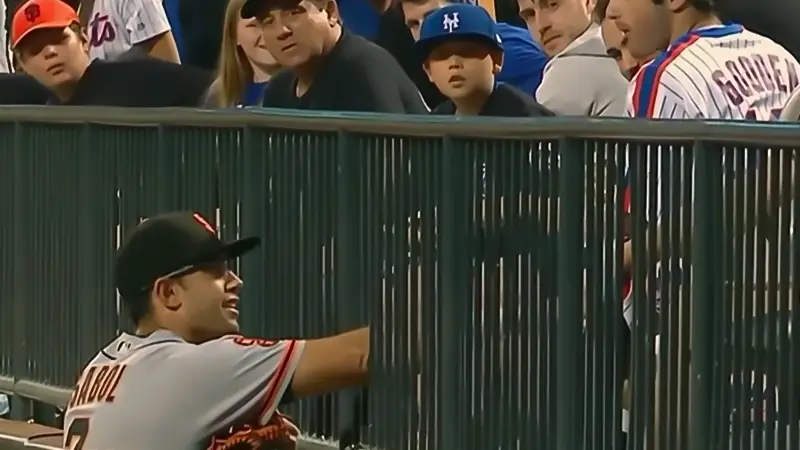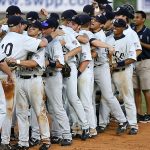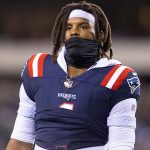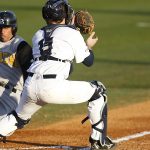Fan interference in baseball is a topic that has sparked countless debates and controversies over the years.
One of the most memorable incidents occurred during the 2003 National League Championship Series when Chicago Cubs fan Steve Bartman deflected a foul ball away from outfielder Moisés Alou.
With the Cubs leading 3-0 in the eighth inning, this moment became a pivotal point in the game, leading to a dramatic shift in momentum.
The umpire ruled there was no interference since the ball had crossed into the stands, but the incident left a lasting impact on players and fans alike.
Moments like these highlight the fine line between being a passionate fan and unintentionally altering the course of a game.
Understanding the rules and implications of fan interference is essential for appreciating the complexities and emotions that come with America’s pastime.
Types of Interference in Baseball
In baseball, interference refers to actions by players, coaches, or others that obstruct or hinder the natural course of play.
There are several types of interference recognized in the rules of baseball:
Offensive Interference
Offensive interference occurs when a member of the offensive team physically hinders the defensive team. This usually decreases the chances to make an out or increases the chance that a baserunner will advance.
When offensive interference happens, the ball becomes dead. For example, if a batter-runner intentionally runs out of the baseline to disrupt a defensive play, this is considered offensive interference.
Similarly, spectator interference involves fans disrupting play by touching the ball or a player. This can significantly impact the game, leading to controversial outcomes and rule enforcement by umpires.
Umpire Interference
Umpire interference happens when an umpire impacts the play. This includes an umpire being hit by a fair batted ball before it touches a fielder or passes by an infielder.
Another scenario is when an umpire hinders a catcher’s attempt to throw anywhere. If the catcher’s direct throw results in an out, the play stands; if not, the ball becomes dead and runners return to their previous bases.
Fan interference, on the other hand, occurs when a spectator reaches into the field of play and affects the game. This can happen when a fan touches a live ball, potentially altering its trajectory or the fielder’s chance to make an out.
Umpires then have to determine the appropriate course of action, which often includes awarding bases to runners or calling a batter out, depending on the situation. Both umpire and fan interference create unique challenges and controversies in the game.
Catcher Interference
Catcher interference occurs when the catcher physically impedes the batter’s ability to hit the ball. When catcher interference is called, the batter is usually awarded first base.
For example, if the catcher touches the bat during the swing, this is deemed catcher interference. Catcher interference occurs when the catcher physically impedes the batter’s ability to hit the ball.
When catcher interference is called, the batter is usually awarded first base. For example, if the catcher touches the bat during the swing, this is deemed catcher interference.
Similarly, fan interference happens when a spectator disrupts the play by reaching onto the field or interfering with a player’s ability to make a catch. This can lead to complex rulings and often requires umpire judgment to restore fair play.
Spectator Interference
Spectator interference happens when a fan inappropriately affects the play, like touching a live ball or a player in play.
An infamous example is the Steve Bartman incident during the 2003 NLCS, where the fan’s action impacted the game’s momentum.
Spectator interference can change the course of a game, emphasizing the need for fans to respect the boundaries of play.
While most fans understand their role is to cheer from the stands, occasional lapses can lead to significant controversy and can even alter the outcome of crucial games.
Major League Baseball has clear rules to penalize such interference, but the best safeguard remains an informed and respectful fan base.
Historical Cases of Fan Interference
Fan interference in baseball has occasionally been a source of controversy and memorable moments throughout history.
Here are a few notable cases:
Steve Bartman Incident (2003)
Perhaps the most infamous case of fan interference in baseball history occurred during Game 6 of the 2003 NLCS between the Chicago Cubs and the Florida Marlins.
In the eighth inning, with the Cubs leading and trying to advance to the World Series, a foul ball was hit down the left-field line.
Cubs fan Steve Bartman reached out and deflected the ball, preventing Cubs left fielder Moisés Alou from catching it.
This was widely viewed as a critical moment that shifted momentum, as the Marlins rallied to win the game and eventually the series. Bartman received significant public scrutiny and remains a symbol of fan interference in sports.
Jeffrey Maier (1996)
During Game 1 of the 1996 ALCS between the New York Yankees and the Baltimore Orioles, young fan Jeffrey Maier reached over the right-field fence at Yankee Stadium and caught a fly ball hit by Derek Jeter.
The ball was initially ruled a home run, tying the game. The Orioles protested, arguing fan interference, but the call stood. The Yankees went on to win the game and eventually the series.
Merkle’s Boner (1908)
In a regular-season game between the New York Giants and the Chicago Cubs in 1908, Fred Merkle failed to touch second base on a game-winning hit by Al Bridwell.
As fans stormed the field, Cubs second baseman Johnny Evers retrieved the ball and touched second base, appealing that Merkle was out because he did not advance to second.
The umpire ruled Merkle out due to fan interference, resulting in a tied game that had to be replayed later. This incident ultimately had significant implications for the pennant race that year.
Tropicana Field Catwalk Interference
Tropicana Field, home of the Tampa Bay Rays, has unique catwalks that can come into play during games. In several instances, balls hit into these catwalks have caused confusion and debate about whether they should be ruled in play or not, often depending on where they land after hitting the catwalks.
This has led to various instances of fan interference or interference by the stadium’s structural features. Fan interference typically occurs when spectators reach out onto the field of play, disrupting the game.
Umpires must then decide the outcome based on specific MLB rules, potentially leading to controversial rulings.
Addressing Fan Interference
Addressing fan interference in baseball is crucial to maintaining fairness and integrity in the game.
Here are several measures and considerations that can be taken:
MLB Rules and Regulations
Major League Baseball (MLB) specifies clear rules to manage fan interference incidents.
Rule 6.01(e) details spectator interference, stating that if a spectator reaches out of the stands and over the playing field or interferes with a ball in play, the umpire has the authority to call an out or place runners where they reasonably believe they would have been without the interference.
This rule serves to ensure the fairness and integrity of the game, maintaining clear boundaries between the field of play and spectators.
Enforcement and Penalty Measures
Umpires are primarily responsible for enforcing fan interference rules. They have the discretion to halt play and review video footage if necessary.
For instance, in the 2018 American League Championship Series, José Altuve’s potential home run was overturned due to fan interference after a video review.
MLB also empowers umpires to eject disruptive fans and relocate runners when interference disrupts the play. These measures aim to minimize the impact of outside influences on the game’s outcome.
Frequently Asked Questions
What is fan interference in baseball?
Fan interference occurs when a spectator physically interacts with a ball in play, affecting the outcome of the game. This can involve catching or touching a live ball, which may impact the game’s dynamic and lead to crucial umpire decisions.
How does fan interference affect a baseball game?
Fan interference can shift the momentum of a game, affect player morale, and influence strategic decisions. It may result in controversial umpire calls and could even contribute to a team’s loss, as seen in notable incidents like the Steve Bartman case.
What is Rule 6.01(e) in Major League Baseball?
Rule 6.01(e) in Major League Baseball addresses spectator interference, allowing umpires to make necessary calls when a fan’s actions impact a play. This rule helps ensure the fairness and integrity of the game.
Can fan interference change the outcome of a game?
Yes, fan interference can change the outcome of a game by affecting key plays and altering the game’s momentum. Examples like the 2003 NLCS incident involving Steve Bartman highlight how significant these disruptions can be.
Conclusion
Fan interference undeniably shapes the landscape of baseball in unexpected ways. Whether it’s altering game outcomes or affecting player morale, these incidents highlight the delicate balance between spectators and the game.
Major League Baseball’s rules aim to mitigate these disruptions, but the emotional and strategic impacts remain significant.
The Steve Bartman incident serves as a poignant reminder of how a single moment of interference can become a lasting part of baseball history.
As the sport evolves, understanding and addressing fan interference will continue to be crucial for maintaining the integrity and excitement of the game.








Pat Bloom